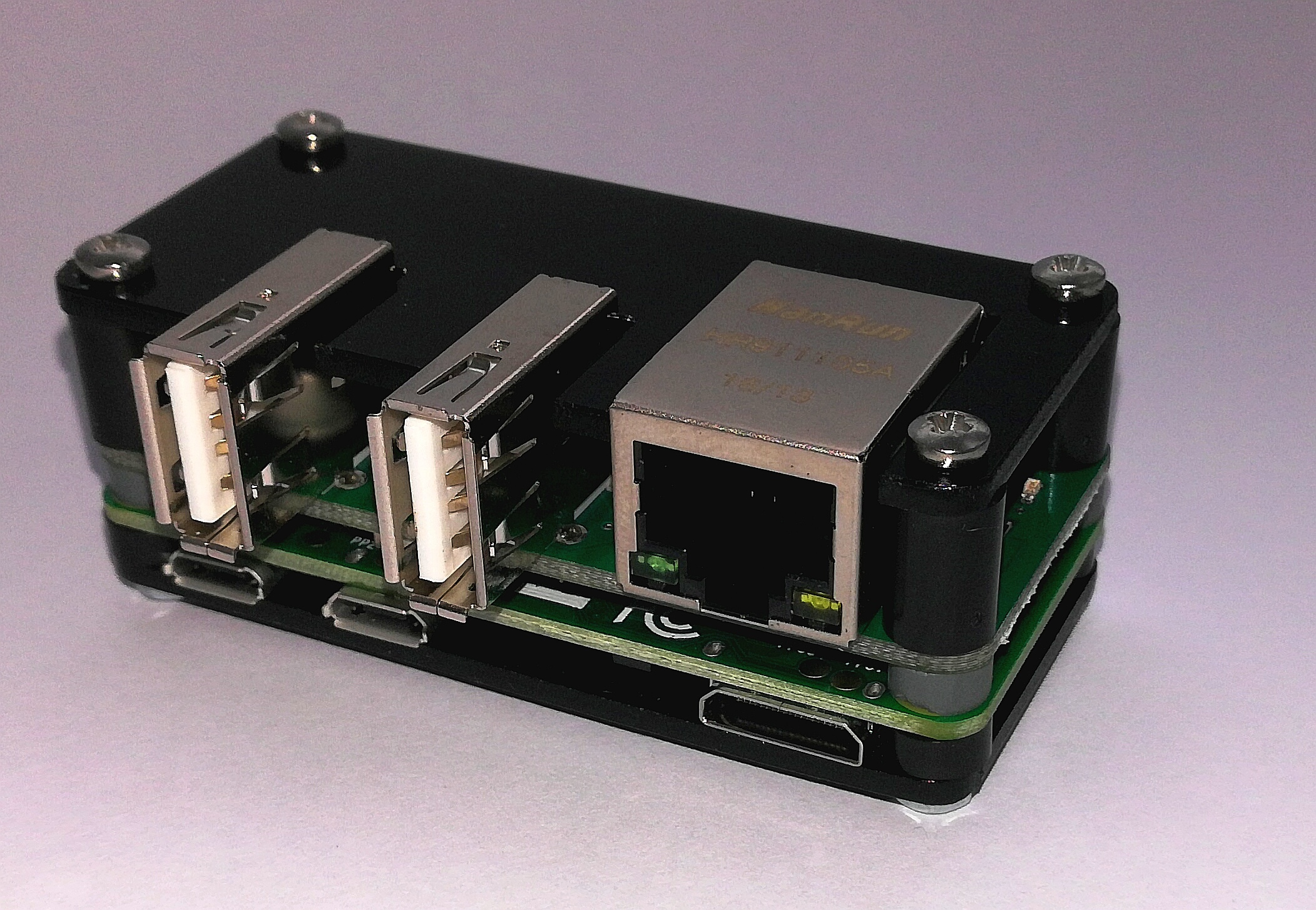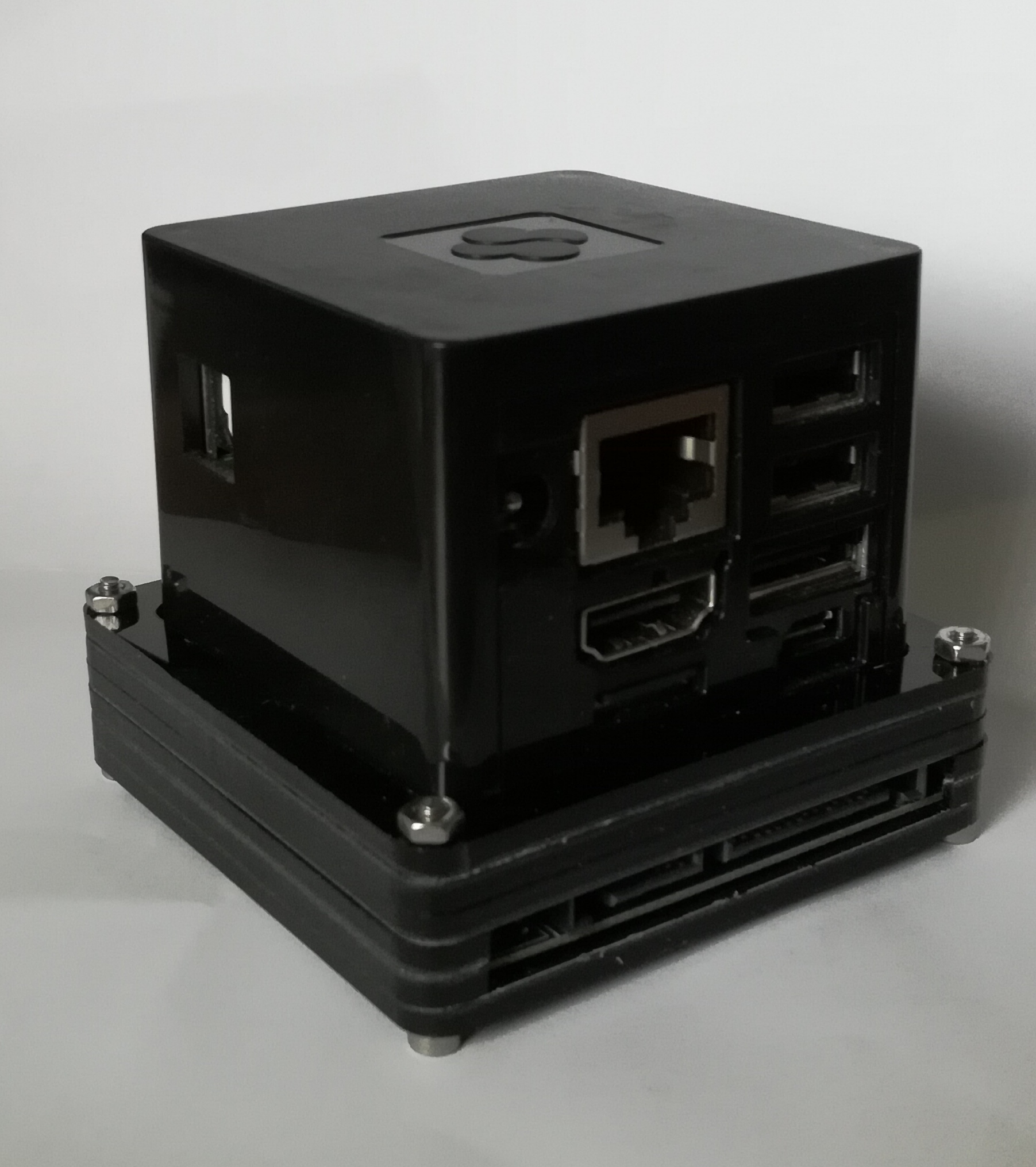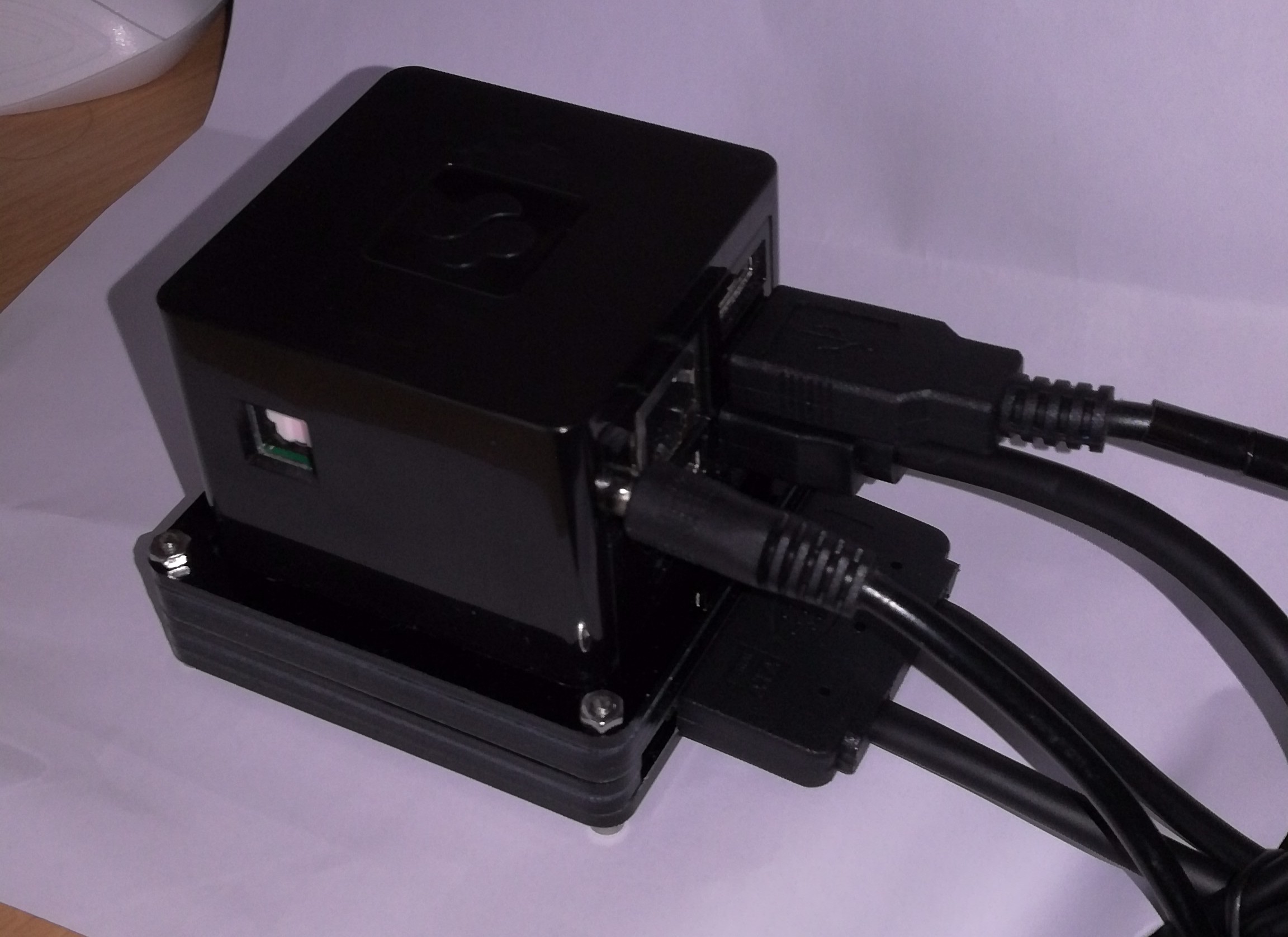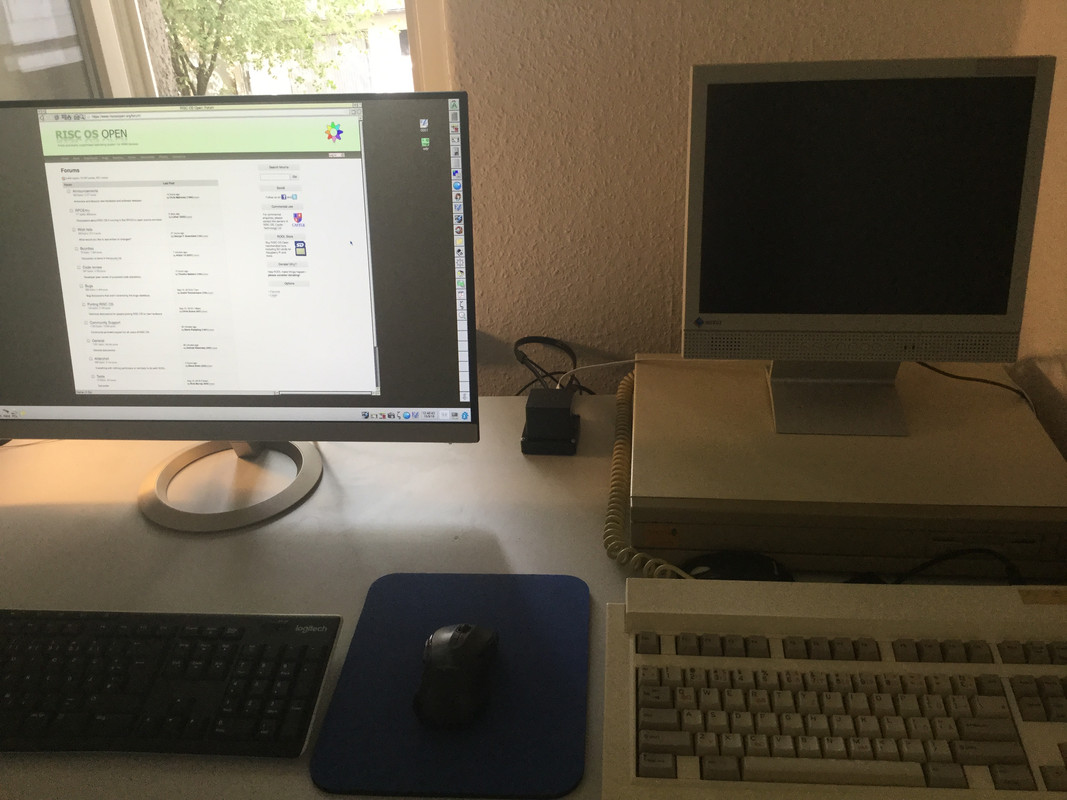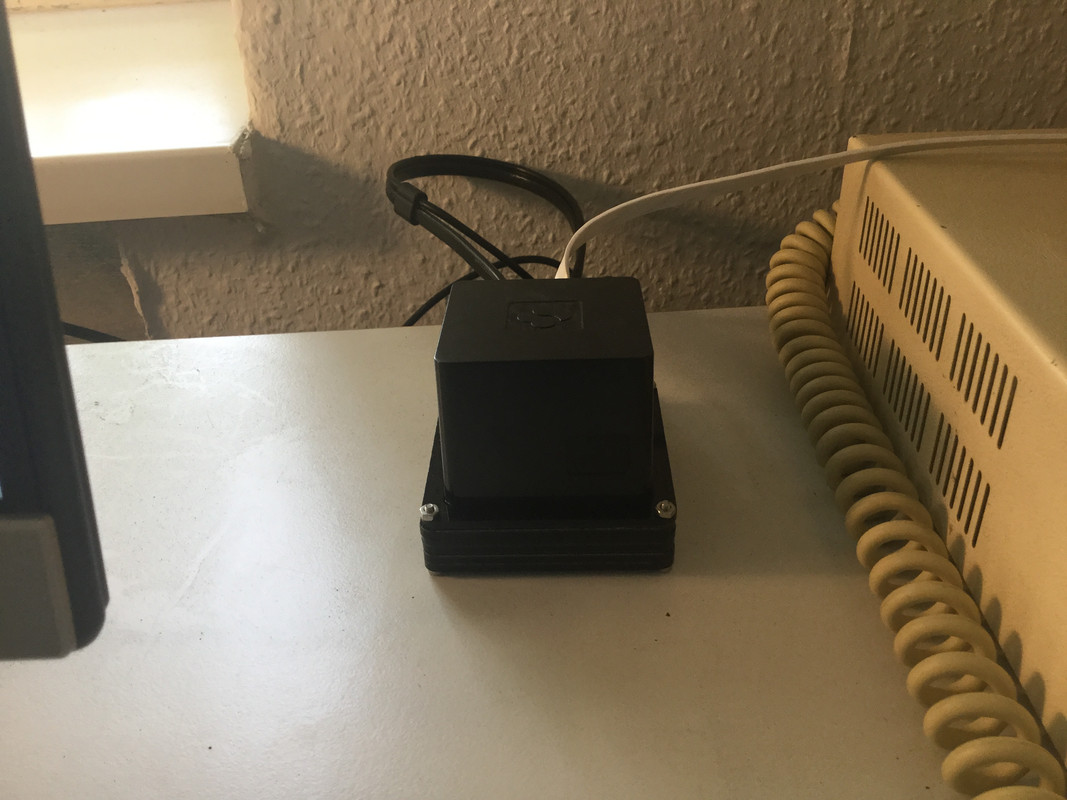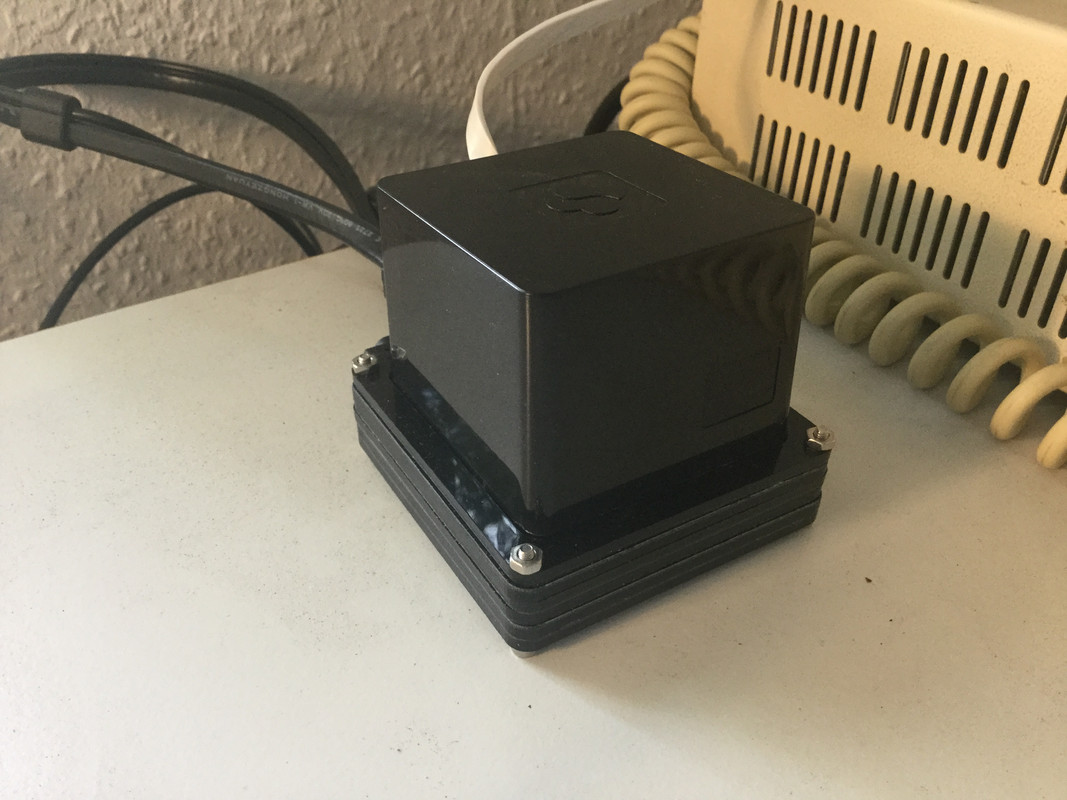Raspberry Pi 2!
|
|
I first experimented with RISC OS on a Raspberry Pi 3, and it was pretty neat, but UNIXLIB was broken on ARMv8 and I can’t live without BC and AWK! So I got a Pi2. Guess what, they’d upgraded the Pi2 to the same SOC as the Pi3. Then I bought a Pi0 (before they could upgrade its SOC!) and it’s been my RISC OS machine, and pretty nice. And now a friend of mine has traded my ARMv8 Pi2 for an original ARMv7 Pi2 and it is now my RISC OS machine. It does seem less crashy when the ethernet isn’t on the far side of a 2-piece USB cable and a hub that might be dying of old age… |
|
|
PatchSWP is the solution… |
|
|
Good to know that there’s now a solution. |
|
|
It is more a workaround than a solution – the solution is to use awk and bc rebuilt from source against the latest UnixLib which no longer uses SWP. The datestamps of the binaries from riscos.info however suggest that the packages hosted there are not ARMv8 safe – I haven’t tried (if someone has too much free time, a strict ARM CPU emulation core – one that faults all officially deprecated ARM stuff for v5, v6, v7 and v8 – for one of the emulators would be really great), just looked. |
|
|
AFAIK most things still being developed are ARMv8 safe now. PatchSWP is a little miracle too, when old or “dormant” pieces of software aren’t ARMv8 safe. I’ve been using my Pi3 with RO for the last couple of years mostly and these days about the only thing that trips it up is !Zap, however it is way, way better than it was. Oh, and the !Sunfish front end. But I believe that’s something totally different. Willard, I use a 3 way USB hub / ethernet combo with a MicroUSB connector on it for my Pi3. A while back I relocated the cord on it so it wasn’t quite as awkward to deal with. The hardware is definitely nothing special, but it works. I keep flopping around regarding the Pi Zero. It’s so small, but once I add what I need to use it it’s way bigger than any other one! So then I give up and either switch back to the Pi3. Then I feel like I’m wasting it and switch to the 1B, get irritated at it’s instability, then switch back to the Zero. The cycle continues. |
|
|
I tried one of those but the one I got had an unsupported (by RISC OS) ethernet chip. :-/ I agree, once you consider all the extra cabling and extra boxes involved in a Pi 0 system, it’s not so tiny! |
|
|
Not necessarily. ;-) If you saw the picture of my desktop that I posted a couple of weeks back you would see a rather small Pi Zero setup. Here are some close-ups:
It has USB*3, WiFi and RTC. |
|
|
Ahem: si.zeRO is imminent!
|
|
|
The though occurred that if we had a bluetooth and a wireless capability you could lose the chunky USB and ethernet ports… |
|
|
Yeah. I make up ‘Pocket Computers’ for a local charity using the Pi Zero W that users can connect to over RDP from their phones, or, more sensibly, connect it to their TV and use their (Android) phone as the keyboard and mouse. Clunky, but great for those with low disposable incomes. Alas, not using RISC OS for the reasons you highlighted. |
|
|
For a size comparison of the mini.m and si.zeRO (and a mouse), have a look at the pic from the last ROUGOL meeting – http://www.rougol.jellybaby.net/meetings/2018/aug.html |
|
|
Huh? That might be interesting, unfortunately no mention of it on the website yet. |
|
|
Due for release at the London Show AFAIK. It forms a square base that the mini.m sits in, making it slightly higher and wider. |
|
|
Hmm that rings a bell. Guess we’ll all have to wait and see then! Edit: did you really mean m-SATA? The mini.m was really designed with e-SATA in mind. m-SATA sounds like an odd choice for an add-on, especially since it has already been superseded by „M.2“. |
|
|
The reason it’s mSATA rather than m.2 is the footprint. It’s a much more compact form factor for adding to the mini.m. Here’s a couple of sneak preview images: It’s supplied with a cable to connect it to the eSATA port, which is powered by USB, so can either use one of the USB ports on the mini.m or a standard phone charger. The preferred option is a phone charger with two ports – one to power the mini.m and one to power the drive – a cable to enable that is also supplied. You just need to provide the charger. |
|
|
Needs some Acorn nuts (aka dome nuts)! ;-) |
|
|
You mean the ones that always pop the dome off because the bolts are invariably about 1mm too long? I like the idea including the pun :) |
|
|
It’s actually a lot smaller than you’d think:
|
|
|
A little something I threw together on my phone to ram the point home. :-)
The capabilities and memory are inversely proportional to the size. Now let’s talk 8K EPROMs vs 64GB µSD cards! |




